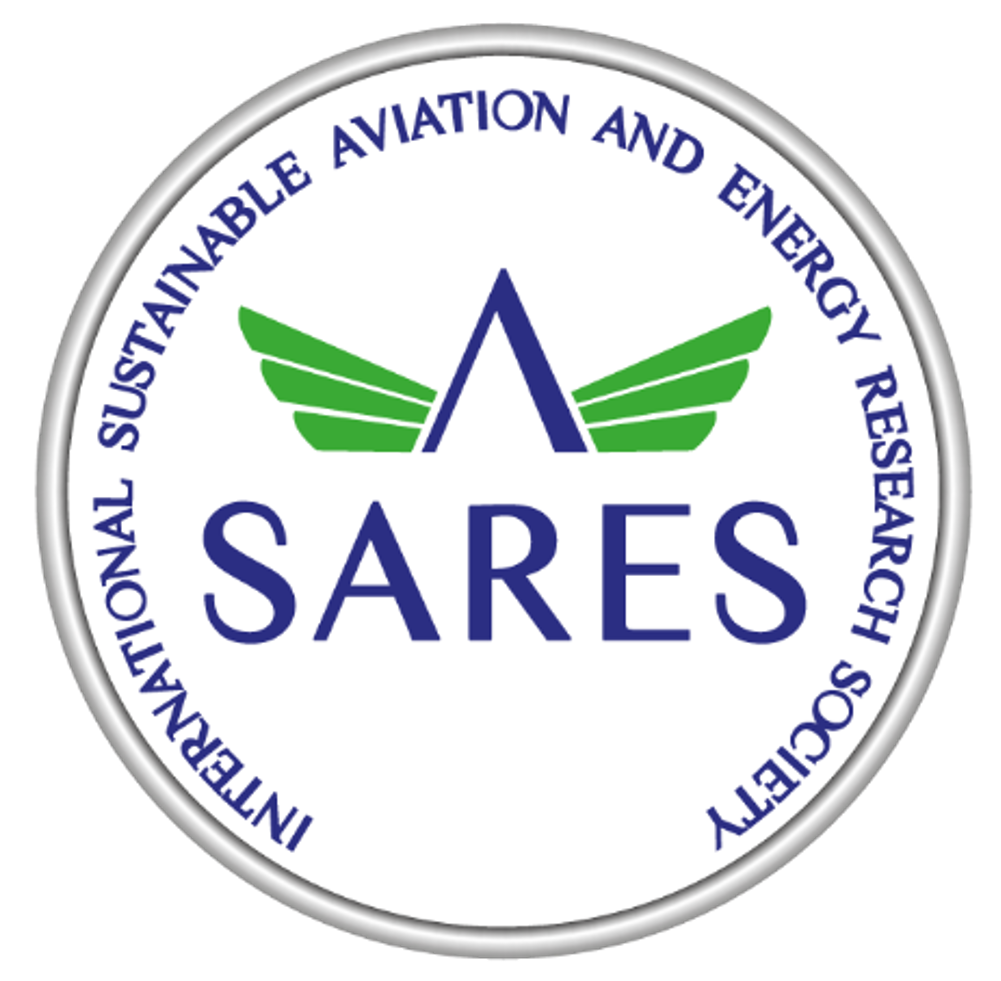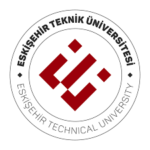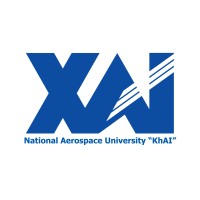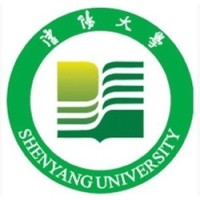Keynote Speakers
(Names sorted in alphabetical order)
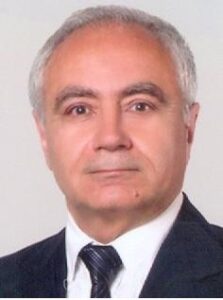
Chingiz Hajiyev
Istanbul Technical University, Faculty of Aeronautics and Astronautics, Türkiye
Presentation Title: Comparison of R-Adaptive Robust Kalman Filters for UAV State Estimation Under Measurement Noise Uncertainty
Comparison of R-Adaptive Robust Kalman Filters for UAV State Estimation Under Measurement Noise Uncertainty
R-adaptive robust Kalman filters (RKF) for unmanned aerial vehicles (UAV) state estimation under uncertain measurement noise conditions are investigated and compared. An innovation-based and residual-based measurement noise covariance estimation algorithms were considered. Algorithms are tested for two different measurement malfunction scenarios; continuous bias at measurements (additive sensor faults) and measurement noise increments (multiplicative sensor faults). We examine and evaluate the estimation accuracy of a conventional KF, RKF based on Multiple Measurement Noise Scale Factors (MMNSF), innovation-based recursive R-adaptive RKF and residual-based recursive R-adaptive RKF.
Prof.Dr. Chingiz Hajiyev, graduated from Moscow Aviation Institute, Moscow, Russia, with honors in 1981. He received his Ph.D. and DSc (Eng) degrees in Process Control in 1987 and 1993, respectively.
From 1987 to 1994 he worked as a Scientific Worker, Senior Scientific Worker, Chief of the Information-Measurement Systems Dept. at the ASPA “Neftgazavtomat”. From 1994 to 1996 he was a Leading – Scientific Worker at the Institute of Cybernetics of the Academy of Sciences of Azerbaijan Republic. He was also a Professor in the Department of Electronically-Calculated System Design, Azerbaijan Technical University, where he had been teaching 1995-1996.
He joined to Department of Aeronautical Engineering, Istanbul Technical University, Turkey in 1996 as a Professor. From 2016 to 2023, he was also Head of the Aeronautical Engineering Department. He is the author about 600 scientific publications including 15 books, 34 book chapters and more than 400 international journal and international conference papers. More than 100 scientific papers are published in the Science Citation Index Expanded (SCIE) journals. His research interests include attitude determination and control, fault diagnosis, fault tolerant control, Kalman filtering and integrated navigation systems.
1- Navigation
2- Fault diagnosis
3- Fault tolerant control
4- Kalman filtering
5- Satellite attitude determination and control
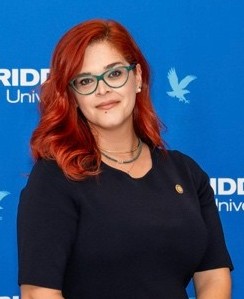
Eva Maleviti
Embry-Riddle Aeronautical University, USA
Presentation Title: Hydrogen Readiness in Aviation: Technology Meets Regulation and Market Demand
Hydrogen Readiness in Aviation: Technology Meets Regulation and Market Demand
Hydrogen is becoming a cornerstone of aviation’s long-term sustainability strategy, offering zero carbon emissions at flight operations and with high energy density compared to conventional fuels. This keynote explores the current readiness of hydrogen technology in aviation, examining the intersection of technological innovation, regulatory adaptation, and market development. Technologically, hydrogen propulsion — through both combustion and fuel-cell systems — has achieved prototype-level maturity, with major initiatives alread in development. However, infrastructure and maintenance frameworks, including cryogenic storage and refueling safety, remain under development. Regulatory progress, led by EASA, FAA, and ICAO, is gradually aligning with these advancements through emerging certification pathways and harmonized safety standards. Market readiness is growing, driven by declining hydrogen costs and strategic partnerships among airlines, airports, and energy suppliers. The Maintenance, Repair, and Overhaul (MRO) sector will play a central role in operational integration and workforce reskilling. Despite economic and regulatory challenges, hydrogen represents the most viable route toward zero-emission flight. Achieving readiness will depend on sustained collaboration between technology developers, regulators, and operators to create a resilient, hydrogen-powered aviation industry, however the level of readiness depends also on identifying challneges and cretaing pathways to overcome them.
Dr Eva Maleviti is an Assistant Professor at Embry-Riddle Aeronautical University (ERAU). After a long-term career in the aerospace industry as academic coordinator and consultant in MROs and airlines, in 2022 she joined ERAU as the program coordinator of the MS in Aviation and Aerospace Sustainability. She has been involved in various industry projects related to aviation sustainability strategies, ESG plans, and other aviation-related initiatives and more in the field of energy management and sustainability. Dr Maleviti also works as a technical expert for aviation emission metrics and calculations in the Accreditation System of Greece for ICAO CORSIA and EU-ETS schemes. She is involved in industry training for aviation topics, such as human factors, aviation legislation, safety, quality management and auditing techniques, and other EASA-related courses. She is involved in research projects regarding the adoption of environmental management systems in aviation, energy management in aviation buildings professionals’ perspectives in aviation sustainability, airports, hydrogen certification, and standardization. She has authored over 15 journal publications, presented at more than 30 international conferences and industrial workshops. She is the author of two books: Fundamentals of Sustainable Aviation and Energy Management and Renewable Energy, and she is a Member of the Royal Aeronautical Society. She has a Ph.D. in Sustainability, Energy and Environment, an MSc in Sustainable Development and a Graduate certificate in Aviation Maintenance.
1- Hydrogen
2- Sustainable Aviation
3- Policy
4- Standardization
5- Circularity

Gökçin Çınar
University of Michigan, USA
Presentation Title: Integrated Systems Approaches to Electrified Aircraft Design and Operations
Integrated Systems Approaches to Electrified Aircraft Design and Operations
The electrification of aircraft requires more than incremental changes to propulsion—it calls for a fundamentally new way of thinking about how aircraft, propulsion architectures, power management systems, and operations interact as a unified whole. At the Integrated Design of Efficient Aerospace Systems (IDEAS) Laboratory at the University of Michigan, we develop computational frameworks that couple physics-based modeling, multidisciplinary design optimization, and systems engineering, all accelerated by machine learning, to address the challenges and opportunities of this evolving field.
While achieving technical feasibility remains central, operational and economic viability are equally important. Airlines must be able to profitably integrate electrified aircraft into existing networks without disrupting schedules, making ground-charging constraints as critical as in-flight performance. In this systems view, operations play a key role in making electrification practical and appealing for operators as well as engineers.
This seminar will show how we leverage these frameworks to rapidly explore the complex trade-offs inherent in novel aircraft concepts. Key topics will include trade-off analysis across vehicle configuration, propulsion–power integration, and operational profiles, illustrated with examples drawn from our open-source design tools and current projects.
Dr. Gökçin Çınar is an Assistant Professor at the University of Michigan, where she directs the Integrated Design of Efficient Aerospace Systems (IDEAS) Laboratory. Her research focuses on computational systems design, with an emphasis on future aircraft and propulsion concepts.
Dr. Çınar is the recipient of the 2025 AIAA Lawrence Sperry Award for pioneering contributions to electrified aircraft and sustainable aviation, as well as the 2024 SARES Young Scientist Award. Her work has also received multiple best paper awards from AIAA and IEEE. Actively engaged in the professional community, she serves as Chair of the AIAA Electrified Aircraft Technology Technical Committee and was the General Chair of the 2024 AIAA/IEEE Electric Aircraft Technologies Symposium (EATS).
She earned her Ph.D. and M.Sc. in Aerospace Engineering from Georgia Tech, and her B.Sc. from Middle East Technical University.
1- Systems Design and Optimization
2- Advanced Concepts
3- Model-based Systems Engineering
4- Surrogate modeling
5- Electrified Aircraft Propulsion
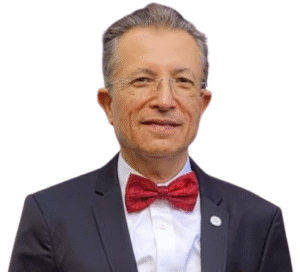
Hikmet Karakoç
Eskisehir Technical University, Türkiye
Presentation Title:
New developments and science in sustainable aviation and drone technologies
New developments and science in sustainable aviation and drone technologies
Content
Content
1- Content

Kwon Alex Hakeem
Korea National Association of Cognitive Science Industry, South Korea
Presentation Title: A.I cooperative Swarm Drone
A.I cooperative Swarm Drone
AI swarm drones are autonomous systems designed to operate collaboratively in dynamic environments. Using real-time data, they coordinate flight paths, share information, and adapt to terrain or weather, enabling efficient search, rescue, and surveillance missions.
Dr. Kwon Alex Hakeem Heechoon is Korean an AI drone expert specializing in swarm intelligence and autonomous flight systems. His research focuses on search-and-rescue, defense, and industrial applications, advancing safe and efficient drone technologies.
1- Drone
2- Swarm
3- A.I
4- Cooperative
5- Search and Rescue
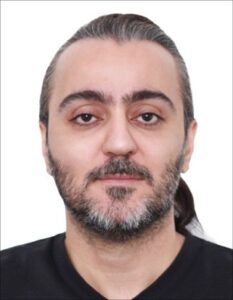
Mahdi Sahlabadi
Research Professor at the Drone Lab SCH, South Korea
Presentation Title: Bridging Formal Verification and Real-Time Sensor Fusion in UAV Systems
Bridging Formal Verification and Real-Time Sensor Fusion in UAV Systems
Ensuring the safety and reliability of autonomous drones requires sensor-fusion and perception systems that are not only accurate but also provably correct under uncertainty and real-time constraints. This research proposes a formally verified framework for multi-sensor fusion and real-time environmental perception in unmanned aerial vehicles (UAVs). The approach models the estimator and perception pipeline as a hybrid system, combining continuous dynamics from IMU and GPS integration with discrete sensor updates from cameras and LiDAR. Using differential dynamic logic (dL) and temporal logic (LTL/PCTL), we specify safety, timing, and fault-tolerance properties such as bounded estimation error, deadline guarantees, and probabilistic resilience to sensor dropouts. Verification is performed with tools including KeYmaera X, PRISM, and TLA+, while runtime monitors enforce these invariants during flight in a ROS 2-based environment. The framework is evaluated on multi-sensor datasets and real drone experiments under degraded sensing conditions. Results demonstrate that the formal specifications enable quantifiable guarantees of stability, timing, and fail-safe recovery without compromising real-time performance. This work bridges the gap between traditional probabilistic fusion and certified autonomy, advancing the development of provably safe and trustworthy UAV perception systems.
Dr. Mahdi Sahlabadi is a researcher and educator with expertise in cyber-physical systems, process modeling, and sustainable operations, with a particular focus on unmanned aerial vehicles (UAVs). His research integrates formal modeling techniques, such as Petri nets, with data-driven process mining to design, analyze, and optimize drone operations for both efficiency and sustainability.His work bridges the gap between theory and practice by coupling rigorous modeling frameworks with real-world operational data, enabling optimization of battery usage, mission planning, and resource allocation without compromising cybersecurity. With a publication record that includes peer-reviewed articles, conference papers, and collaborative industry reports, Dr. Sahlabadi’s scholarship reflects a multidisciplinary approach—drawing on systems engineering, operations research, and sustainability science. He has also worked closely with industry partners to translate research outputs into practical tools for drone fleet management and mission optimization.
1- Formal methods;
2- Sensor fusion;
3- Real-time perception
4- Autonomous drones;
5- Hybrid systems;
6- Differential dynamic logic; Probabilistic verification; Runtime assurance; Safety-critical UAV systems
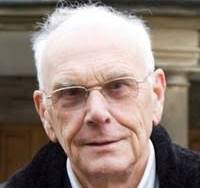
Maximillian Platzer
Affiliation, USA
Presentation Title: Can aerohydronautical engineering make a contribution to the transition to the hydrogen economy?
Can aerohydronautical engineering make a contribution to the transition to the hydrogen economy?
Content
Content
1- Formal methods;
2- Sensor fusion;
3- Real-time perception
4- Autonomous drones;
5- Hybrid systems;
6- Differential dynamic logic; Probabilistic verification; Runtime assurance; Safety-critical UAV systems
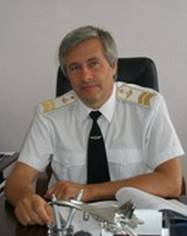
Oleksandr Zaporozhets
Institute of Aviation (Łukasiewicz Research Network – Institute of Aviation), Polandy
Presentation Title: EFACA aircraft development and environmental achievements on a roadmap to ACARE goals
EFACA aircraft development and environmental achievements on a roadmap to ACARE goals
EU EFACA (Environmentally Friendly Aviation for all Classes of Aircraft) project considers conceptual designing of two new types of aircraft – 80-seat regional jet with hydrogen-powered hybrid electric propulsion system (HEP) and 150-seat short-medium range jet with liquid hydrogen (LH2) fueling of the engines. For both types the Top-Level Aircraft Requirements (TLAR) are defined so as their conceptual aircraft layout, main dimensions and flight masses, schemes of power supply during the flight. Analysis of these baseline aircraft proved the reference aircraft for both of them: ATR72-600 for the HEP aircraft and Airbus-320neo for the LH2-fueled aircraft. The principles of aircraft fuel burn, emission, noise (with further impact assessment on environment) analysis and assessment of the baseline aircraft in comparison with reference aircraft in the EFACA project are formulated for three levels of their evaluation – aircraft, airport and fleet scenarios of current and future air traffic in the European perspective. For these purposes the VALDES Space was designed and developed further with detailed analysis of the aircraft design and flight performances influence on environmental impact assessment.
Between the 1978-2022 was employed in National Aviation University, Kyiv, Ukraine on the positions of Researcher, Leading Researcher, Professor, Head of the Chair, Director of the Institute, Vice Rector. From the April 2022 is employed in the Łukasiewicz Research Network – Institute of Aviation in Warsaw, Poland, on a position of the Area Research Leader – Professor. Degree of the Dr.Sc. was obtained in 1998 by the defending the thesis “Development of Models and Methods of Information Provision for Environment Protection from Civil Aviation Impact”. The title of Professor was obtained in 2004 by decision of the Academic Council of the National Aviation University. ICAO CAEP (Committee on Aviation Environmental Protection) member between 2010-2020 by nomination from Ukrainian CAA, currently a member of the MDG, WG2 and ISG groups of the CAEP. ECAC AIRMOD (Aircraft Noise Modelling Task Group) and EAEG (European Aviation and Environment Group) member from 2010. SARES member from 2015 and a member of the management board from 2023.
1- Aircraft
2- HEP hybrid electric propulsion system
3- LH2liquid hydrogen fueling of the engines
4- Fuel burn
5- Emission
6- Noise
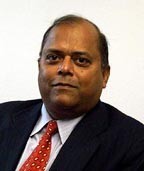
Ramesh Agarwal
Washington University in St. Louis, USA
Presentation Title: Design and Analysis of Hydrogen Fuel Cell Powered Short- to Medium-Range Regional Aircraft
Design and Analysis of Hydrogen Fuel Cell Powered Short- to Medium-Range Regional Aircraft
This paper provides details of the conceptual design of a couple of short- to mid- range hydrogen fuel cell powered commercial aircraft. First, details of a hydrogen fuel cell powertrain are provided in which the design of each individual component is analyzed. A battery-fuel cell hybrid mode of propulsion is also presented in which a battery array supplements the fuel-cell power during the increased power requirements at takeoff and climb. An automated process is presented in which the fuel cell stacks are sized based on the power requirements of the propulsion system and the components of the powertrain. The aircraft is sized considering the required components and fuel tanks. A numerical code has been written in Python to automate this process in conjunction with a previously written analysis code which uses various empirical and numerical methods to estimate the overall range and performance of a given aircraft configuration. Using this combined code called WUADS (Washington University Aircraft Design Software), two hydrogen fuel cell powered aircraft configurations closely based on the Bombardier CRJ200, and Boeing 717-200 are analyzed. Several aircraft component performance values are used to represent the different technology levels. It is found that the hydrogen fuel cell propulsion would be technologically feasible by the year 2030 and will be highly efficient by 2035 or later. In addition, several ~100 passenger configurations are tested for different mission ranges and are compared to the efficiency of a hydrogen combustion powered aircraft configuration. These configurations include both a standard cantilever wing configuration and a truss braced wing configuration. It was found that the truss braced wing significantly increased the efficiency for range above 1000 nmi; however, it did not provide much benefit at shorter range. Also, it was found that approximately 2000 nmi range seems to be the point at which the hydrogen fuel cell powered aircraft configurations cease to be competitive in efficiency as the hydrogen powered gas turbine combustion configurations.
Professor Ramesh K. Agarwal is the William Palm Professor of Engineering in the department of Mechanical Engineering and Materials Science at Washington University in St. Louis. From 1994 to 2001, he was the Sam Bloomfield Distinguished Professor and Executive Director of the National Institute for Aviation Research at Wichita State University in Kansas. From 1978 to 1994, he was the Program Director and McDonnell Douglas Fellow at McDonnell Douglas Research Laboratories in St. Louis. Dr. Agarwal received PhD in Aeronautical Sciences from Stanford University in 1975, M.S. in Aeronautical Engineering from the University of Minnesota in 1969 and B.S. in Mechanical Engineering from Indian Institute of Technology, Kharagpur, India in 1968. Over a period of fifty years, Professor Agarwal has worked in various areas of Computational Science and Engineering – Computational Fluid Dynamics, Computational Acoustics and Electromagnetics, Control and Systems Theory, and Multidisciplinary Design and Optimization. He is the author and coauthor of over 600 journal and refereed conference publications. He has given many plenaries, keynotes, and invited lectures at various national and international conferences worldwide in over sixty countries. Professor Agarwal continues to serve on many academic, government, and industrial advisory committees. Dr. Agarwal is a Fellow thirty professional societies including the Institute of Electrical and Electronics Engineers (IEEE), American Association for Advancement of Science (AAAS), American Institute of Aeronautics and Astronautics (AIAA), American Physical Society (APS), American Society of Mechanical Engineers (ASME), and American Society for Engineering Education (ASEE). He has received many prestigious honors and national/international awards for his research contributions including the AIAA Reeds Aeronautics Award, SAE Medal of Honor, ASME Honorary Membership and Honorary Fellowship from Royal Aeronautical Society.
1- Hydrogen Fuel Cell (HFC) Powered Aircraft
2 – Analysis of HFC Powered CRJ 200 and B 717-200
3 – Analysis and Design HFC Power-Train
4 – Numerical Simulation & Optimization Aircraft Design Software
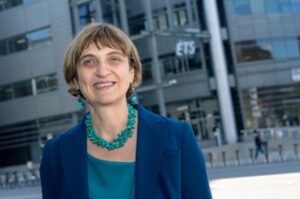
Ruxandra Botez
Ecole de technologie superieure, Canada
Presentation Title: Electrical Engine Modeling for Drones using Artificial Intelligence Methodologies
Electrical Engine Modeling for Drones using Artificial Intelligence Methodologies
The methodology that will be presented at this conference is dedicated to a user that wants to design a Brushless Direct Current (BLDC) model. To prove the universality of the method, only public data was used to design a BLDC model for a drone. The research was developed to be used by all people that want to buy, and therefore to model a BLDC motor. In consequence, neural networks parameters were chosen to offer the method to someone that could have basic knowledge in neural networks methodologies using Matlab. Very good predictions results were obtained for the rotational speed (0.20% of error) and torque (0.45% of error). To design the model, a wide type of data could be used, such as public data (provided on manufacturer websites), or real test bench measurements.
Dr. Ruxandra Botez is the Head of the Laboratory of Applied Research in Active Controls, Avionics and AeroServoElasticity LARCASE since 2003. She has been Canada Research Chair Tier 1 Holder in Aircraft Modeling and Simulation Technologies during 15 years until 2025. Ruxandra is a Fellow of the American Institute of Aeronautics and Astronautics (AIAA), the Canadian Academy of Engineering (CAE), Canadian Aeronautical Society Institute (CASI), Royal Aeronautical Society (RAeS), and many other organizations. She is also an Honorary Member of the International Sustainable Aviation and Energy Research Society (SARES) and also an Honorary Foreign Member of the Romanian Academy. Ruxandra is the Editor-in-Chief of the INCAS Bulletin and Associate Editor of 10 other journals including the Aeronautical Journal. Ruxandra graduated more than 500 students in her academic career, who worked on her research projects: 30 PhD students, 170 Master’s students (projects and theses) and 320 Internship students. Ruxandra published more than 210 archival original journal articles, 350 conference papers and 7 invited book chapters. Ruxandra and her team have obtained more than 70 awards; she also gave more than 50 invited speaker presentations. Ruxandra’s projects were and are realized in collaboration with Bombardier, CAE, CMC Electronics, Bell Helicopter Textron, Thales Aerospace, GlobVision, FLIR Systems, IAR-NRC, Presagis and NASA, Alenia and CIRA, Hydra Technologies, DLR, INCAS and other.
1- Drone
2- Artificial Intelligence
3- Neural Networks
4- Electrical Engine
5- Torque
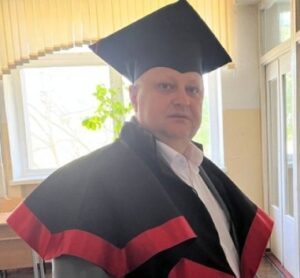
Sergii Boichenko
National Technical University of Ukraine “Igor Sikorsky Kyiv Polytechnic Institute”, Ukraine
Presentation Title: Status and Perspectives of Hydrogen Infrastructure in Ukraine: World Experience
Status and Perspectives of Hydrogen Infrastructure in Ukraine: World Experience
Ukraine is one of the EU’s priority partners in the future hydrogen economy, as it has the necessary capacity for hydrogen production – both for domestic consumption and for export. In 2021, the Ministry of Energy of Ukraine joined the European Pure Hydrogen Alliance. Ukraine’s potential for hydrogen production is currently being investigated. The possibility of using the national GTS for hydrogen transportation to Europe is also being studied. Ukraine has significant potential for hydrogen production, especially green hydrogen from renewable resources, but faces challenges like high costs and insufficient infrastructure. The current focus is on leveraging existing gas transport systems and developing new international pipeline corridors, such as the Central European Hydrogen Corridor (CEHS), to export hydrogen to the EU. International cooperation and a national strategy are key to unlocking this potential. In general, the infrastructure of hydrogen technologies is in its infancy and requires significant investment in development. For example, there are no stationary hydrogen car refueling stations, and due to military aggression, the hydrogen infrastructure of airports is not being developed, but there is a developed network of gas pipelines that can be rationally used for hydrogen transportation
Date of birth – 12 April 1968;
Head of the Scientific and Technical Union of Chemmotologists.
Supervisor of the Interactive Laboratory for Diagnosing Operational Materials in Energy and Transport,
Head of the Department of Automation of Electrical and Mechatronic Complexes,
Institute of energy Saving and Energy Management,
National Technical University of Ukraine “Igor Sikorsky Kyiv Polytechnic Institute”
The main Scientific direction is the Efficient and Rational Use of Fuels, Lubricants & Technical liquids (Сhemmotology).
Started working experience in 1990-1991 at the Civil Aviation Plant. In 1998-2006 I was the head of the Petroleum Products Testing Center of the Ukrainian Center for Aviation Chemmotology and Product Certification «UCACH-SEPRO». In 2005 I was the head the Ukrainian Research and Training Center of Chemmotology and Certification of Fuel and Lubricants and Technical Fluids. In 2007 I founded and became the head of the chemmotology department of the National Aviation University. At the same time he was appointed Deputy Vice-Rector of the University for scientific work. Since 2011, after the reorganization of the Department of chemmotology, I headed the Department of Ecology at the Institute of Environmental Safety of the National Aviation University.
05.2018–02.2019 – Director of the Education-Research Institute of Environmental Safety
(National Aviation University).
02.2019–11.2020 – Dean of the Faculty of Environmental Safety, Engineering and Technology (National Aviation University).
11.2020–30.06.2021 – Supervisor of the Ukrainian Research and Educational Center
of Chemmotology and Certification of Fuels, Lubricants and Technical liquids.
01.09.2021 – till now – National Technical University of Ukraine “Igor Sikorsky Kyiv Polytechnic Institute”, Supervisor of the Interactive Laboratory for Diagnosing Operational Materials
in Energy and Transport.
- Hydrogen
- Infrastructure
- Technologies
- Chemmotology
- Energy
- Potential

Soledad Le Clainche
Universidad Politécnica de Madrid, Spain
Presentation Title: Physics-aware AI for Fluid Dynamics: Hybrid Reduced-Order Models Towards Greener Technologies
Physics-aware AI for Fluid Dynamics: Hybrid Reduced-Order Models Towards Greener Technologies
Addressing climate change requires innovative strategies and technological advancements to mitigate atmospheric pollution. Fluid mechanics plays a key role in this effort, with applications ranging from optimizing combustion efficiency to reducing urban air pollution and improving aircraft aerodynamics for lower fuel consumption.
This research focuses on the development of hybrid reduced-order models (ROMs) that integrate fundamental physical principles with advanced computational techniques. By combining modal decomposition methods, such as singular value decomposition (SVD) and higher-order dynamic mode decomposition (HODMD), with machine learning approaches including neural networks, the work seeks to create predictive models that achieve both accuracy and computational efficiency in fluid dynamics applications.
The methodologies presented have broad and impactful applications. In the energy sector, they enable cleaner and more efficient combustion systems. In urban environments, they support the design of strategies to control and reduce air pollution. In aerodynamics, they contribute to the development of more fuel-efficient aircraft. Finally, in industrial flow control, these models offer advanced tools for optimizing fluid behaviour. Together, these advances reinforce global efforts to achieve sustainability and address the urgent challenges of climate change.
Dr. Soledad Le Clainche, is Professor of Applied Mathematics at the School of Aeronautics of the Universidad Politécnica de Madrid (UPM). In December 2013 she finished her PhD at the same University, in the Dept. of Fluid Dynamics and Aerospace Propulsion. Her main lines of research focus on computational fluid dynamics, data analysis, machine learning and the development and application of predictive reduced order models based on physical principles. In this line, she is PI of several national and EU-funded projects whose main objective is to develop new strategies to reduce air pollution in cities, to develop more efficient combustion systems and aerodynamic designs, and to advance in the field of personalized medicine.
1- Reduced order models
2- Machine learning
3- Data analysis
4- Fluid dynamics
5- Aerospace Engineering
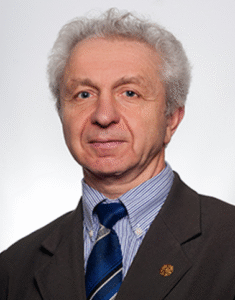
Yepifanov Sergiy
National Aerospace University “Kharkiv Aviation Institute”, Ukraine
Presentation Title: Aircraft Engine Residual Life-time Monitoring
Aircraft Engine Residual Life-time Monitoring
The development of mechanical engineering, particularly in aeronautical engineering, is accompanied by a continuous increase in service life. This process is driven not only by user needs but also by fierce competition among developer companies. Aircraft engines are a prime example of this type of technology. Their service life for military aircraft is several thousand hours, and for civil aviation, tens of thousands of hours. Such service life cannot be ensured without a dedicated flight data monitoring system that calculates actual service life based on actual flight conditions.
Current systems based on flight hours counters do not provide the required accuracy. Therefore, we have developed a system based on a complex of mathematical models of the operating process, thermal and stress states, and a damage model. This system is used by engine developers when assigning service life, but it is unsuitable for operational use for the following main reasons: 1) it is based on finite element models of the main engine components, making it extremely labor-intensive; 2) it considers engine operation under design conditions, while in actual operation, deviations from these conditions can be significant. Therefore, the proposed system utilizes monitoring mathematical models that address these shortcomings.
The report examines the development of monitoring mathematical models for the work process, thermal and stress states, and the analysis of monitoring errors. Examples of practical application and verification of the proposed method are provided.
CURRENT POSITION
Doctor of science, Engineering
Honoured Worker of Science and Technology of Ukraine
Academician of Engineering Academy of Ukraine
Full professor and chief of the Aircraft Engine Design Department
Scientific adviser of the Aero Engine Diagnostics Laboratory
Head of the editorial board of the journal Aerospace Technique and Technology.
Member of the editorial board of the journal Internal Combustion Engines.
Founder and a principal organizer of the annual International Congress of Propulsion Engineering (since 1996).
Head of the Specialized Council for Defending Doct. Sc. Dissertations.
Head of the Section “Aerospace Engineering and Transport” of Expert Council on the Scientific Researches of the Ministry of Science and Education of Ukraine
AREAS OF FUNDAMENTAL RESEARCHES
Gas turbine engines; automatic control; strength life-time analysis; parametric diagnostics; system dynamics; system identification
APPLIED INVESTIGATIONS
In these areas of scientific activity since 1975 S. Yepifanov carries on works with leading engine and aircraft designing companies of Ukraine and former Soviet Union. Under his guiding, the Engine Simulation Tools were designed with which dynamic models of all engines created in JSC “Ivchenko-Progress” and JSC “Motor Sich” design bureaus were realized.
S. Yepifanov was head and direct participant of designing engine diagnostic systems for
An-124, An-140, An-148, Il-96 and Tu-204, and also automatic control systems and life-time monitoring systems for more than 20 types of engines and power plants.
PUBLICATIONS
Scopus – 40, others – 435. Monographs – 7, textbooks – 12, tutorials – 33.
1- aircraft engine
2- service life
3- damage
4- stress state
5- thermal state

